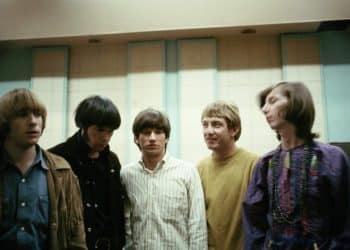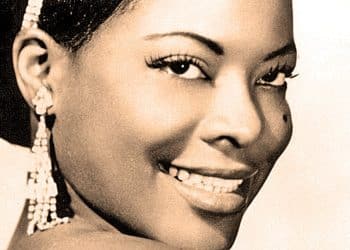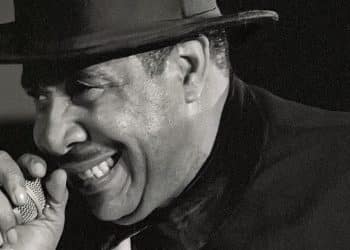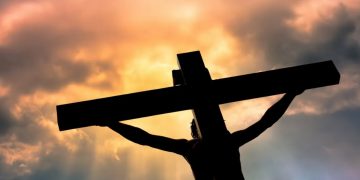The Allman Brothers Band stands as one of the most iconic and influential groups in the history of rock and blues. Famed for their electrifying live performances, intricate guitar harmonies, and soul-stirring blend of rock, jazz, and Southern blues, the Allman Brothers Band carved a legacy that continues to inspire generations of music lovers. At the heart of their timeless appeal lies a catalog of unforgettable songs that have transcended decades, resonating with audiences around the world.
From the soaring dual-guitar solos of Duane Allman and Dickey Betts to Gregg Allman’s raw, emotive vocals and masterful Hammond organ melodies, the band’s genius is evident in every note. Whether capturing the essence of heartbreak, the thrill of the open road, or the spiritual journey of life itself, their music strikes a universal chord.
In this article, we’ll explore the top 10 most popular songs by The Allman Brothers Band, a collection of tracks that define their unparalleled artistry. From enduring classics like “Ramblin’ Man” and “Jessica” to deep cuts that showcase their unparalleled musicianship, this list will remind you why they remain legends in the annals of rock history. Get ready to rediscover the magic of the Allman Brothers Band!
1. “Whipping Post” (1969)
“Whipping Post” is more than just a song—it’s a full-body experience. First appearing on The Allman Brothers Band’s debut album in 1969, it begins with a thunderous and unforgettable bass line that sets the stage for an emotionally raw journey. Gregg Allman’s gritty, impassioned vocals pour out the agony of betrayal and emotional torment, turning a simple metaphor into something mythic. The lyrics speak to that feeling of being tied down and hurt repeatedly by love, and Allman delivers each line as if he’s living it in real time.
But what really sets this track apart is its musical complexity. The original studio version is gripping, but the song came into its full glory in live performances—especially the legendary 22-minute version on At Fillmore East. The band used it as a launching pad for improvisation, weaving blues, rock, and jazz into a swirling storm of sound. Duane Allman’s slide guitar sings and screams, intertwining with Dickey Betts’ sharp leads, creating an electric tension that never lets up.
“Whipping Post” became a calling card for the band—showcasing their deep emotional range, instrumental chops, and ability to turn personal pain into musical transcendence. It’s a cornerstone of Southern rock and a landmark in live music history.
2. “Ramblin’ Man” (1973)
“Ramblin’ Man” is The Allman Brothers Band at their most accessible—and maybe their most joyful. Released in 1973 on the Brothers and Sisters album, the song was a departure from their heavier, bluesier roots. Written and sung by guitarist Dickey Betts, it leaned heavily into country-rock territory, blending breezy melodies with warm storytelling. The result? A massive hit that soared to #2 on the Billboard Hot 100 and became the band’s biggest single.
Inspired by Betts’ own love of the road and the lifestyle that came with it, the lyrics reflect the bittersweet nature of constantly moving: “Lord, I was born a ramblin’ man / Tryin’ to make a livin’ and doin’ the best I can.” There’s a sense of freedom, but also a quiet sadness behind those words—a longing for connection that’s always just out of reach.
Musically, it’s smooth and sunny. The dual guitar harmonies are bright and perfectly interwoven, and the rhythm section keeps things flowing with a relaxed confidence. While purists debated its stylistic turn, “Ramblin’ Man” showed that the Allmans could stretch creatively without losing their soul. It’s a road trip anthem, a jukebox staple, and a feel-good classic all rolled into one.
3. “Midnight Rider” (1970)
“Midnight Rider” is one of those songs that feels like it was born on the road, with dust in its teeth and moonlight in its eyes. Released in 1970 on Idlewild South, it’s one of the band’s most iconic tracks—and for good reason. Written by Gregg Allman and roadie Robert Kim Payne, the song perfectly captures the feeling of trying to outrun your past while keeping one foot in the shadows.
From the first notes of that haunting acoustic riff, “Midnight Rider” sets a mood. It’s not a song that begs for attention; it pulls you in quietly, seductively. Gregg’s voice—raspy, resolute—sings about evasion, resilience, and determination: “I’ve gone past the point of caring / Some old bed I’ll soon be sharing.” It’s the anthem of someone who won’t be caught, no matter the cost.
What makes the track so powerful is its minimalism. There’s no flashy solo or over-the-top chorus. Instead, the instrumentation is tight and hypnotic, with layered textures and subtle grooves that create a sense of movement. Over time, “Midnight Rider” became one of Gregg Allman’s personal favorites, and it’s easy to see why. It’s a song built for endless highways, a rebel’s lullaby echoing into the night.
4. “Jessica” (1973)
“Jessica” is the kind of song that makes you want to roll the windows down and chase the horizon. An instrumental from the 1973 album Brothers and Sisters, it stands as one of the most beloved pieces in The Allman Brothers Band’s catalog. Composed by Dickey Betts and named after his infant daughter, the track is a joyful, sun-soaked celebration of life and motion.
From the start, “Jessica” radiates optimism. Its bright, twin-guitar harmonies—led by Betts and supported by keyboardist Chuck Leavell’s dazzling piano runs—feel like a musical road trip through open country. There are no lyrics, but it tells a story all the same: one of freedom, energy, and unfiltered happiness.
What’s remarkable about “Jessica” is how effortlessly complex it is. Beneath the easygoing vibe is some of the tightest musicianship in rock history. Time signatures shift, melodies twist and dance, and every member of the band plays with both precision and soul. It’s a masterclass in instrumental storytelling.
Over the years, “Jessica” found a second life in pop culture—famously used as the theme for Top Gear—but it always belongs first to the open roads and Southern skies that inspired it. It’s pure musical joy, no words required.
5. “Melissa” (1972)
“Melissa” is a song that wraps itself around your heart. Featured on Eat a Peach in 1972, it’s one of the most tender, introspective tracks The Allman Brothers Band ever recorded. Written by Gregg Allman years earlier, before the band had even formed, “Melissa” was a deeply personal piece that didn’t find its place until after the tragic passing of Duane Allman. When it finally made it to tape, the song felt like a quiet, emotional tribute—a moment of stillness amid the band’s usual sonic storms.
The lyrics speak of a lonesome drifter, always on the move but quietly yearning for a sense of belonging. “Sweet Melissa” is the woman he can never quite stay with, the symbol of a life he wishes he could have but can’t. Gregg’s voice is soft and weathered, filled with longing, and the acoustic guitar provides a gentle, steady backdrop.
Unlike the band’s more jam-heavy tracks, “Melissa” is stripped down and intimate. It showcases their softer side without losing emotional weight. For fans and newcomers alike, this song offers a different kind of power—not explosive, but deeply felt. “Melissa” isn’t just a love song—it’s a moment of vulnerability that still resonates decades later.
6. “In Memory of Elizabeth Reed” (1970)
“In Memory of Elizabeth Reed” is a sprawling instrumental that showcases the Allman Brothers Band at their most inventive and improvisational. Released on Idlewild South in 1970, it was penned by guitarist Dickey Betts, who drew inspiration from a headstone he saw in a Macon, Georgia cemetery. Though the real Elizabeth Reed remains a mystery, the piece named in her memory became an immortal cornerstone of the band’s live sets.
The composition blends jazz, rock, and blues in a way that feels completely organic. It opens with a moody, mysterious guitar theme, before unfolding into a dazzling interplay of melody and rhythm. Duane Allman and Betts exchange guitar lines like a poetic conversation, each phrase building on the last. The band stretches the tune out during live shows, turning it into a fluid, ever-evolving experience. No two performances were ever the same—part of the magic of the Allman Brothers’ improvisational genius.
It’s not just a song—it’s a journey, often meditative and always dynamic. “Elizabeth Reed” speaks without words, taking listeners through sorrow, longing, joy, and release. It’s a masterclass in musicianship and one of the most revered instrumental pieces in rock history.
7. “Blue Sky” (1972)
“Blue Sky” is one of those songs that just makes everything feel a little bit lighter. Released on Eat a Peach in 1972, it was written by Dickey Betts and stands as one of the most radiant, optimistic tracks in the Allman Brothers Band’s catalog. Inspired by his then-wife, the lyrics are simple but heartfelt—filled with sunshine, love, and gratitude. It’s a song that feels like a deep breath on a warm spring day.
Betts takes lead vocals on this one, delivering them with a gentle, almost serene tone. His message is straightforward: love is good, life is beautiful, and sometimes the sky really is just blue. But what elevates the song into something extraordinary is the guitar work. The harmonized guitar lines between Betts and Duane Allman are nothing short of magical—intertwining in a melodic dance that captures the song’s joyful spirit without saying a word.
Despite its laid-back vibe, “Blue Sky” is musically rich. It showcases the band’s ability to create songs that feel effortless, even when the craftsmanship behind them is meticulous. It’s a fan favorite for good reason—an ode to peace, love, and guitar perfection that always hits just right.
8. “One Way Out” (1972)
“One Way Out” is pure, unfiltered blues-rock energy. Though originally written and recorded by Elmore James and Sonny Boy Williamson, The Allman Brothers Band made it their own with a high-octane live version featured on Eat a Peach in 1972. Recorded at the Fillmore East, it captures everything that made the band’s live shows legendary: searing guitar solos, electric chemistry, and Gregg Allman’s soulful, gritty vocals.
The song tells a classic blues tale—a man trying to sneak out of his lover’s house before her husband catches him. It’s cheeky, tense, and irresistibly fun. Gregg’s voice carries both the swagger and the panic of the situation, and the band plays with a tightness that only comes from endless nights on the road together.
But it’s the guitar duel between Duane Allman and Dickey Betts that turns “One Way Out” into something unforgettable. Their solos don’t just showcase technical skill—they’re playful, fiery, and full of personality. The audience’s energy bleeds into the recording, making you feel like you’re right there in the crowd.
“One Way Out” is the sound of a band at its peak, transforming a classic blues cut into a Southern rock barnburner. It’s a must-hear moment of live music brilliance.
9. “Dreams” (1969)
“Dreams,” from the Allman Brothers Band’s 1969 self-titled debut, is one of their most hauntingly beautiful songs—a slow-burning meditation that blurs the line between blues and psychedelia. Written by Gregg Allman, it’s a song drenched in melancholy and longing, exploring the fragility of hope and the ache of lost potential.
Gregg’s vocals are front and center, dripping with emotion as he sings of unreachable dreams and faded memories. “I’ve been hangin’ on to dreams I’m never gonna see,” he laments, each word delivered with aching sincerity. The lyrics are simple, but they cut deep, resonating with anyone who’s ever wrestled with their own disappointments.
What elevates “Dreams” to the level of masterpiece, though, is Duane Allman’s slide guitar work. His solo here isn’t just a musical passage—it’s a soul’s cry. The notes float, weep, and soar, wrapping around the song’s emotional core like smoke.
The tempo stays steady, almost trance-like, allowing the emotion to simmer and build. It’s not a song meant to wow with flash—it mesmerizes with mood, tone, and restraint. “Dreams” was a declaration of the band’s emotional depth and artistic range right from the start, and it remains a cornerstone of their legacy.
10. “Revival” (1970)
“Revival” opens Idlewild South with an explosion of positivity and musical joy. Written by Dickey Betts, the track marks a notable shift in the Allman Brothers Band’s sound—embracing a more melodic, gospel-inflected approach that feels like an invitation to celebration. Its chorus, “Love is everywhere,” is as much a mantra as it is a hook, delivered with layered harmonies that lift the song into the clouds.
The song builds from a gentle, jangly intro into an upbeat, rhythmic groove driven by Duane Allman and Betts’ intertwined guitar lines. The rhythm section—Butch Trucks and Jaimoe on drums, and Berry Oakley on bass—keeps the beat light and bouncing, creating a vibe that’s both soulful and danceable.
While it doesn’t lean into the improvisational complexity of some of the band’s other work, “Revival” stands out for its sheer warmth and accessibility. It feels like a moment of light breaking through, especially when placed among their more introspective or blues-heavy tracks.
Over time, “Revival” has grown into an anthem of hope and togetherness. It’s a reminder of the band’s range—not just masters of the jam, but also of the joyful chorus. It’s a feel-good track that never wears out its welcome.









